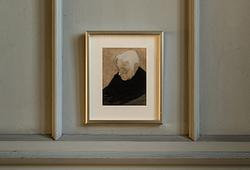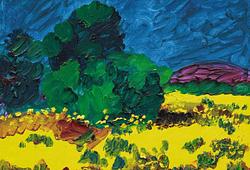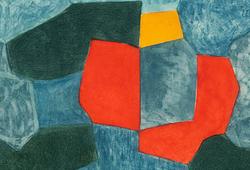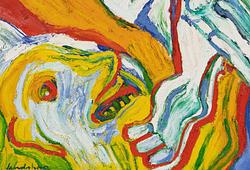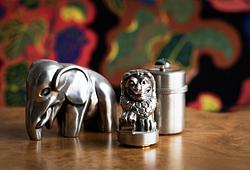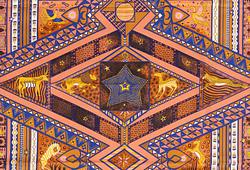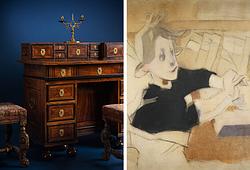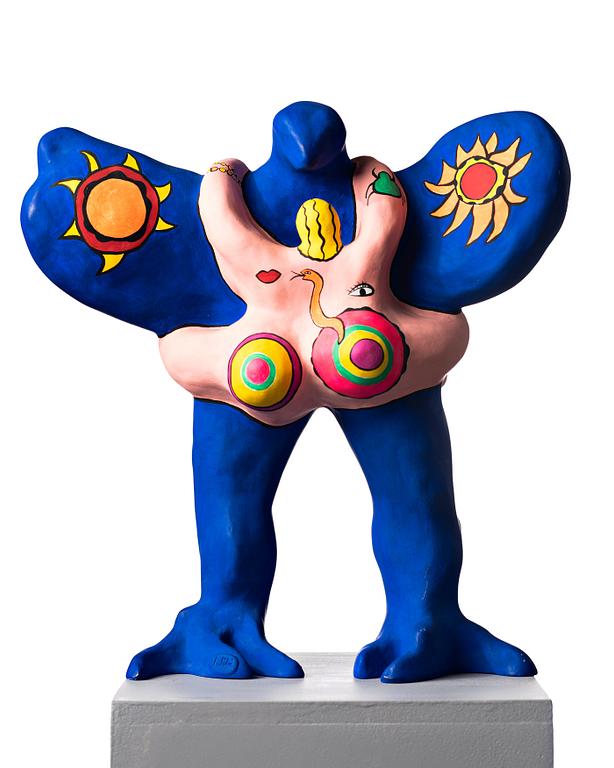Niki de Saint Phalle
"Les Amoureux"
Stamped signature Niki. Painted polyester. Height 43, width 40 cm, depth 20 cm. Unique. Including case in acrylic glass, height 63, width 42, depth 37 cm.
Alkuperä - Provenienssi
The Pontus Hultén and Anna-Lena Wibom collection.
Muut tiedot
“Niki de Saint Phalle loves myths. She invents them without preoccupying herself with art history or popular traditions, without having studied the civilizations which invented the symbols to try and understand their enigmas. She doesn’t depend on knowledge, but relies on her independence. Niki de Saint Phalle has been vigilant her whole life to preserve what is her strength: her freedom.” Pontus Hultén’s words in the exhibition catalogue Niki de Saint Phalle.
In this auction we have two unique sculptures by Niki de Saint Phalle from Pontus Hultén and Anna-Lena Wibom’s private collection. Hultén and Wibom were Stockholm’s “power couple”, Hultén as head of the newly opened Moderna Museet and Wibom responsible for the highly successful Moderna Museet Film Studio. They were both personal friends of Niki de Saint Phalle, who they came to know via Jean Tinguely.
The sculptures being auctioned are unique pieces. Saint Phalle created several different versions of “Les Amoureux” while “La Main Gauche” is probably a study. Besides de Saint Phalle’s “Nanas” the hand is also a common object in her art.
The exhibition “HON-en katedral” (SHE-a cathedral) shown at Moderna Museet in 1966 displayed the ultimate Nana, a monumental lying figure created by Saint Phalle with Jean Tinguely and P. O. Ultvedt. HON was a symbol of the independent “Nana”, a cathedral that contained an entire exhibition space. Saint Phalle was responsible for the exterior and the other two for the interior. The public walked into the womb of this giant woman more than 20 metres long and found themselves in a fantastic world containing a cinema, a bar, a slide and various moving sculptures.
Today, a group of monumental Nana sculptures entitled “Le Paradise Fantastique” in French and “Enchanted Garden” in English stands outside Moderna Museet. The work was created for the Universal Expo Fair in Montréal and was then donated to the museum.
Niki de Saint Phalle’s Nana sculptures appeared for the first time in 1964 inspired by her pregnant friend Clarice Rivers. Initially the sculptures were made from yarn, papier mâché and steel wire, but later Saint Phalle created them in polyester. The curvy, colourful female figures are happy, liberated god-like women, presaging a new, matriarchal era. Saint Phalle also created several Nanas painted in black and white, as a reaction to the civil rights movement in the USA, expressing the artist’s opinion that all women, irrespective of colour, are goddesses.
“Through her spontaneous force she can create beauty. Like a goddess of nature, with a totally convincing strength. The best portraits of Niki de Saint Phalle are found in her sculptures, her drawings and her writings. She is an expressionist artist in the sense that there is little distance between herself and her work. Relations are intuitive rather than meditative or reflective; more emotional than critical or analytical. One can say without irony, she realizes herself in her work.” Pontus Hultén.
He continues: “The originality of her work comes directly from her personality. This simplicity, this lack of sophistication which is implied by her work, is in reality a true sophistication, not at all superficial and conventional, but profoundly original.” Pontus Hultén in the exhibition catalogue Niki de Saint Phalle.




